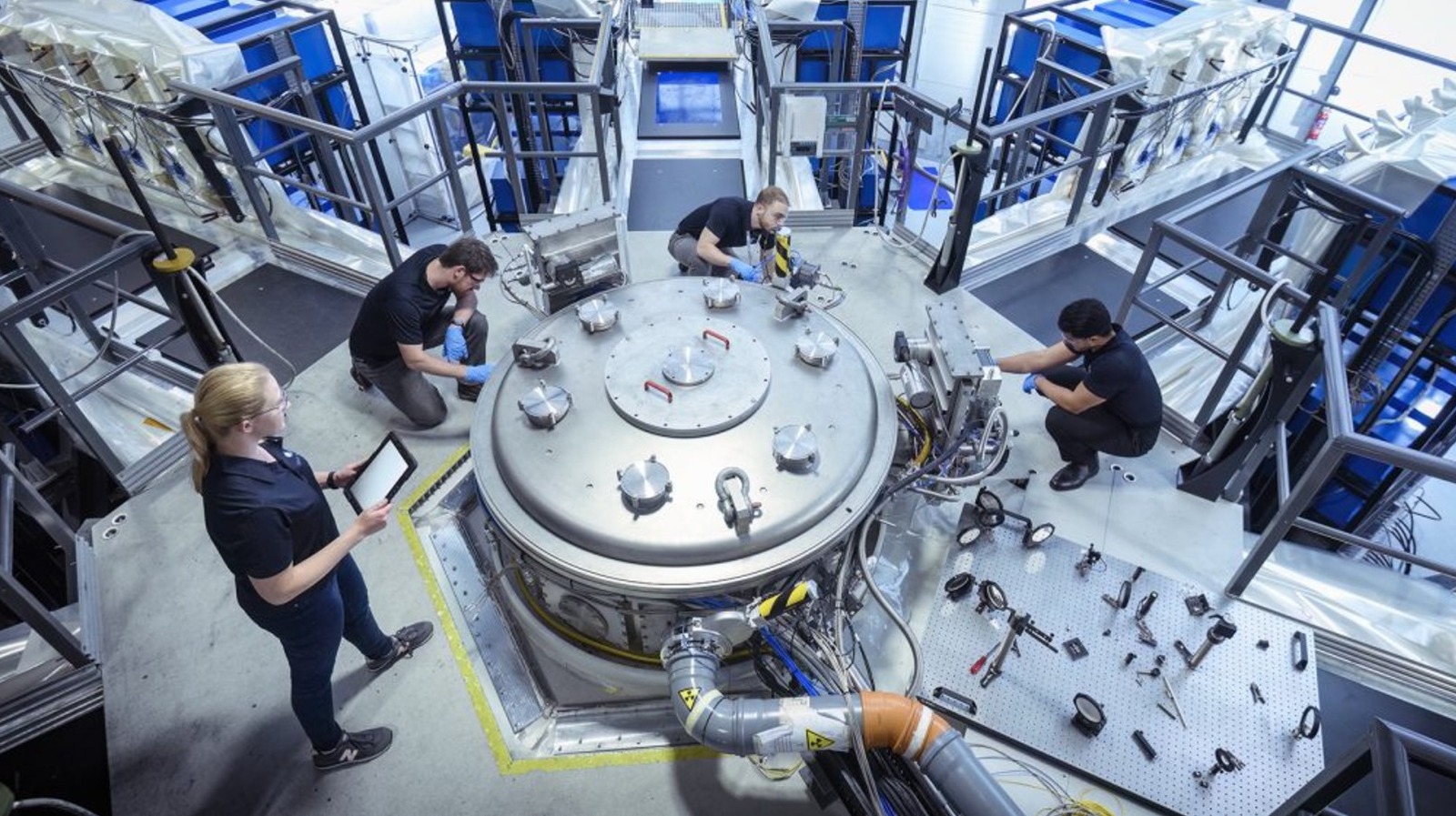Science
UK Firm Breaks Ground on Fusion Power with High Gain Innovation

A significant breakthrough in fusion power has been achieved by the UK-based company First Light Fusion (FLF), marking a pivotal moment in the quest for sustainable energy. The company has successfully developed a method to achieve “high gain” inertial fusion, a key milestone that could ultimately lead to the creation of commercially viable fusion reactors capable of generating near-limitless energy.
Fusion power harnesses energy from the heat produced during nuclear fusion reactions, where two light atomic nuclei combine to form a heavier nucleus, releasing substantial energy in the process. If effectively captured, this energy could provide a clean alternative to fossil fuels, reducing global reliance on coal and gas while significantly lowering carbon emissions.
Revolutionary Advances in Fusion Technology
The process developed by FLF is named FLARE, which stands for Fusion via Low-power Assembly and Rapid Excitation. This innovative approach has the potential to achieve a gain of 1,000, a substantial increase compared to the previous maximum gain of only four, reached by the U.S. Department of Energy’s National Ignition Facility in May 2025. This gain indicates that the fusion reaction produces more energy than is required to initiate it, a critical factor in making fusion power a practical energy source.
FLARE divides the fusion process into two distinct stages: compression and heating. The initial compression generates a large surplus of energy through a technique called “fast ignition.” This breakthrough signifies the first practical application of a method previously confined to theoretical research.
According to FLF’s white paper on FLARE, just one kilogram (approximately 2.2 pounds) of fusion fuel can yield energy equivalent to that of 10 million kg of coal (around 22,046,226 pounds). Ignition occurs when the fuel reaches temperatures of approximately 100 million kelvin (around 179,999,540 degrees Fahrenheit), making the reaction self-sustaining. Achieving and maintaining such extreme temperatures poses significant challenges, necessitating considerable initial energy input. However, if self-sustaining fusion can be achieved, the energy output would far exceed the initial investment.
A Pathway to Sustainable Energy
The implications of FLF’s advancements could be transformative for the global energy landscape. If FLARE operates as anticipated, it could pave the way for multiple fusion reactors, each capable of generating vast amounts of energy. This potential shift would represent a monumental step toward a future where clean, sustainable energy is readily available, fundamentally altering humanity’s energy consumption patterns.
While the achievement marks a vital progression in fusion power research, it is important to recognize that significant work remains to establish functional fusion power plants. The journey toward harnessing fusion energy is ongoing, yet the recent developments serve as a promising indication that the dream of limitless energy may soon be within reach.
With continuous advancements and breakthroughs in fusion technology, the potential to replace non-renewable energy sources with a more efficient and environmentally friendly alternative is becoming increasingly feasible. The commitment and innovation demonstrated by companies like First Light Fusion are crucial in driving this revolutionary change in energy production.
-

 Lifestyle3 months ago
Lifestyle3 months agoLibraries Challenge Rising E-Book Costs Amid Growing Demand
-

 Sports3 months ago
Sports3 months agoTyreek Hill Responds to Tua Tagovailoa’s Comments on Team Dynamics
-

 Sports3 months ago
Sports3 months agoLiverpool Secures Agreement to Sign Young Striker Will Wright
-

 Lifestyle3 months ago
Lifestyle3 months agoSave Your Split Tomatoes: Expert Tips for Gardeners
-

 Lifestyle3 months ago
Lifestyle3 months agoPrincess Beatrice’s Daughter Athena Joins Siblings at London Parade
-

 World3 months ago
World3 months agoWinter Storms Lash New South Wales with Snow, Flood Risks
-

 Science3 months ago
Science3 months agoTrump Administration Moves to Repeal Key Climate Regulation
-

 Science2 months ago
Science2 months agoSan Francisco Hosts Unique Contest to Identify “Performative Males”
-

 Business3 months ago
Business3 months agoSoFi Technologies Shares Slip 2% Following Insider Stock Sale
-

 Science3 months ago
Science3 months agoNew Tool Reveals Link Between Horse Coat Condition and Parasites
-

 Sports3 months ago
Sports3 months agoElon Musk Sculpture Travels From Utah to Yosemite National Park
-

 Science3 months ago
Science3 months agoNew Study Confirms Humans Transported Stonehenge Bluestones









